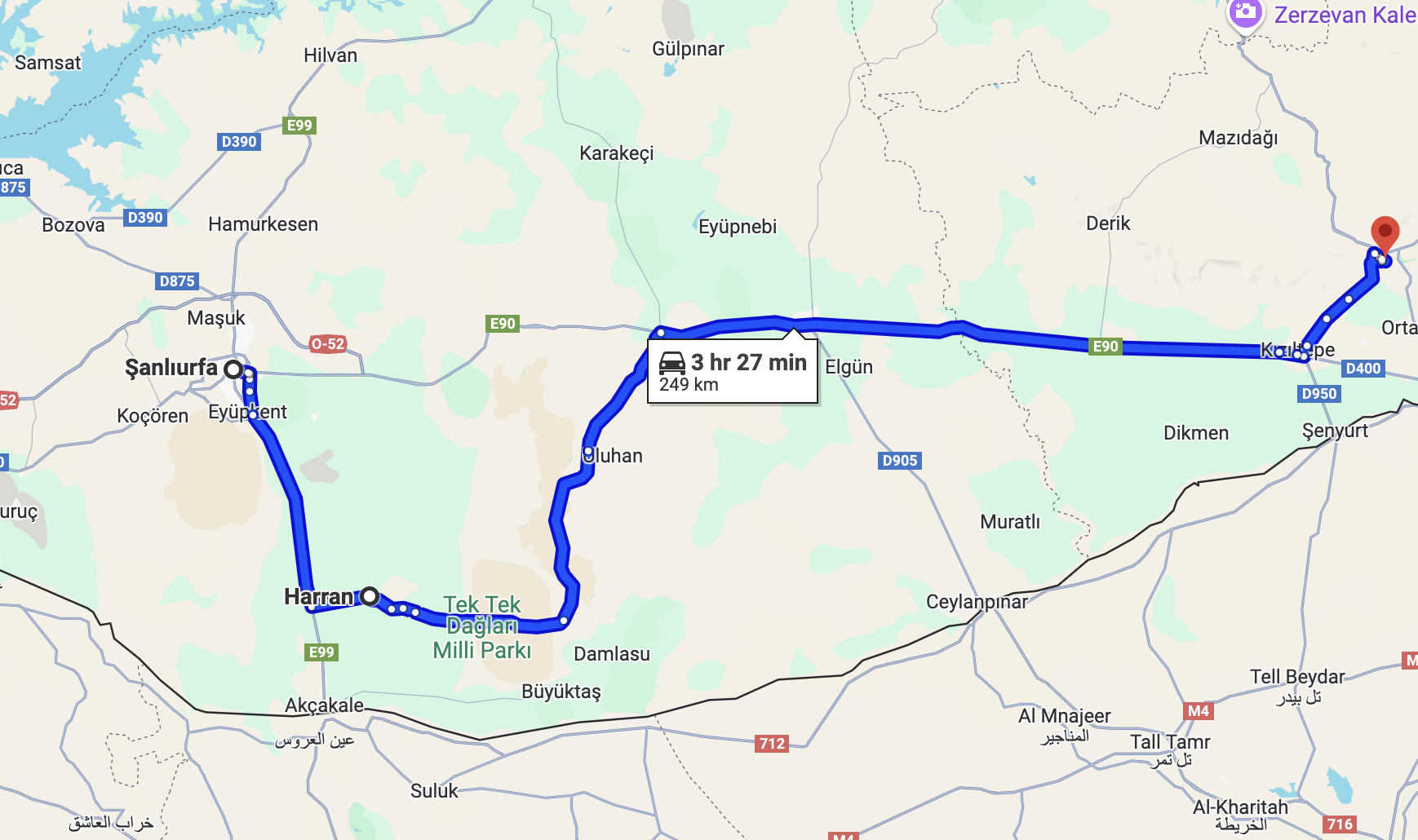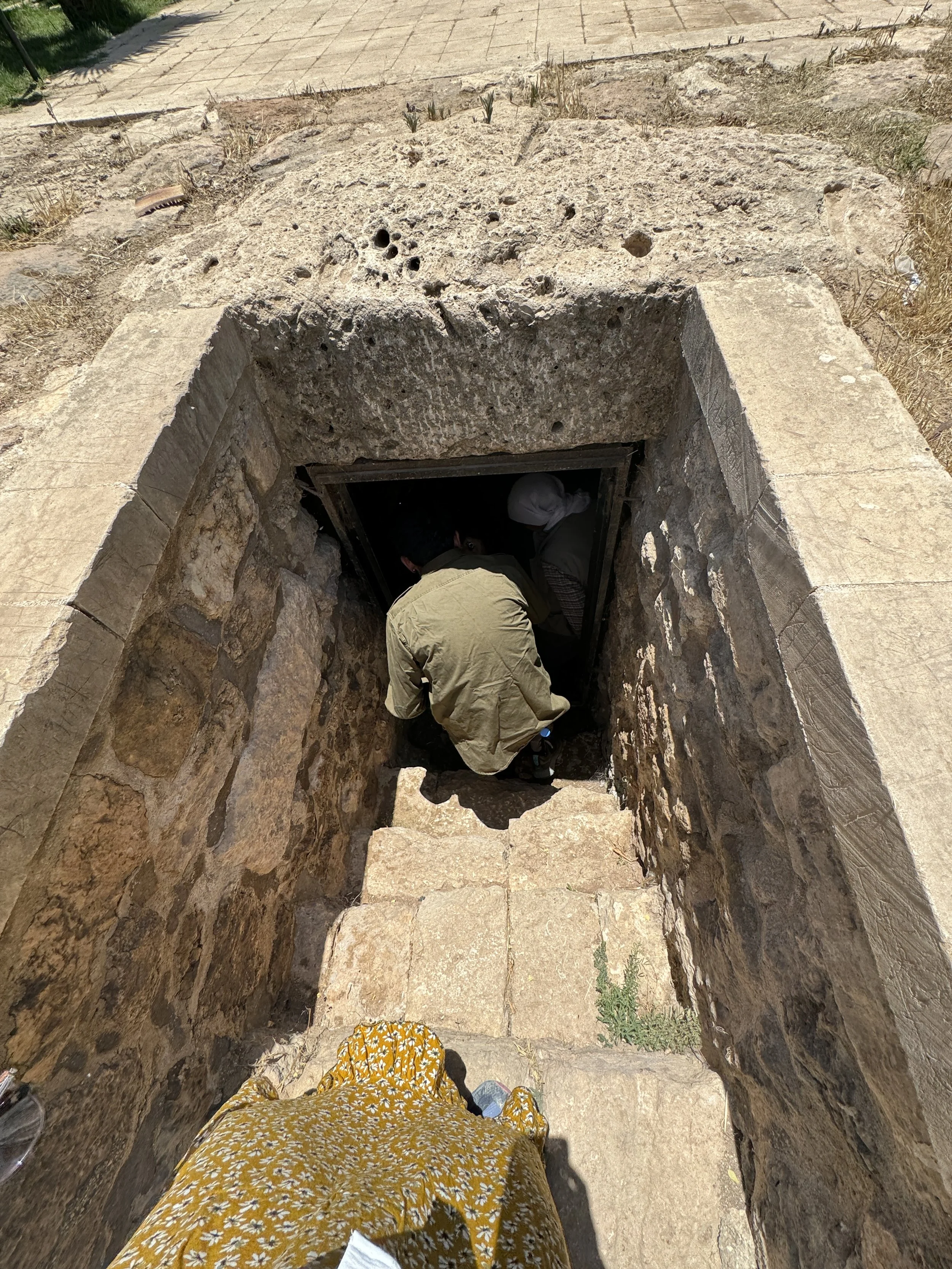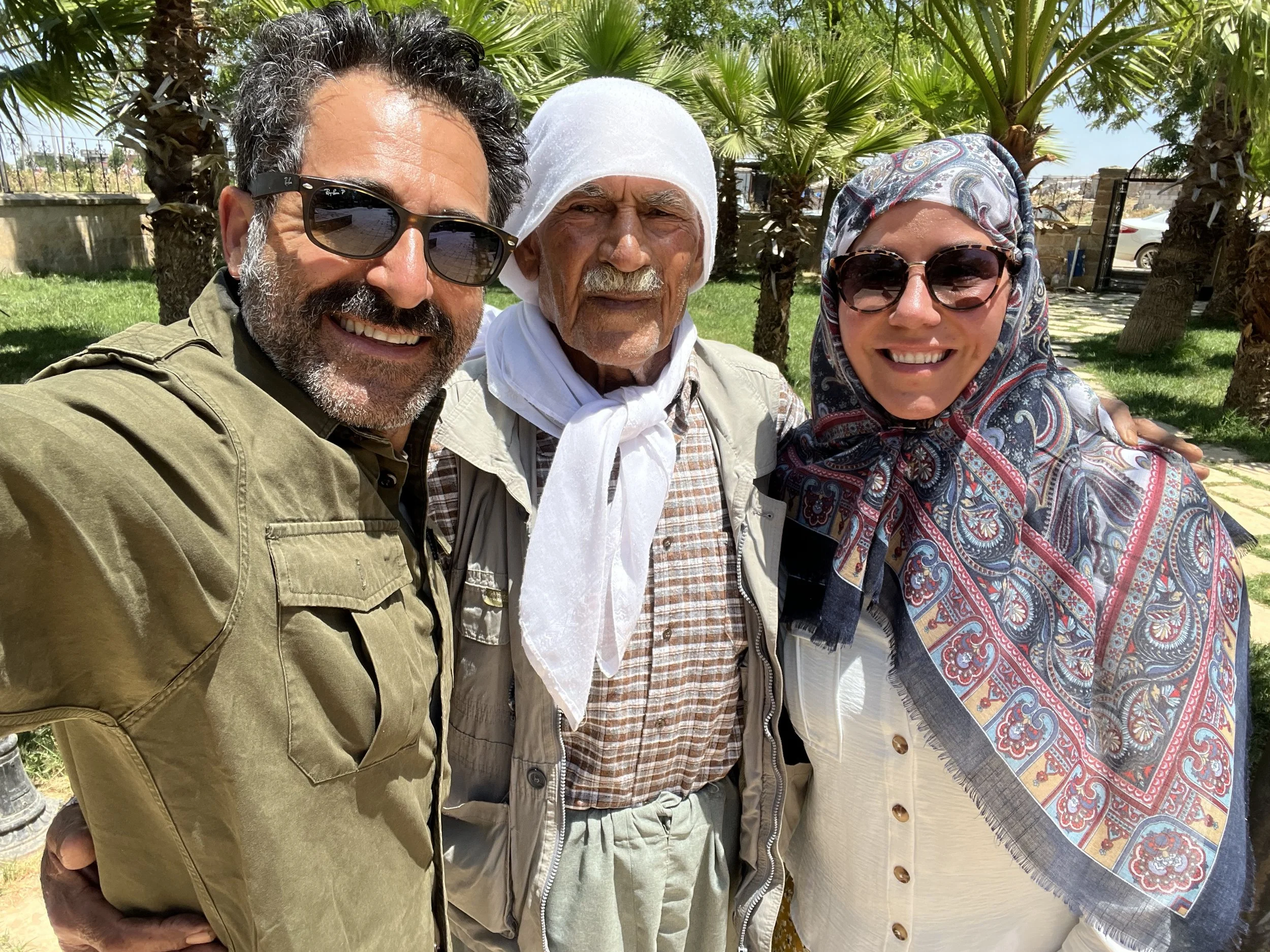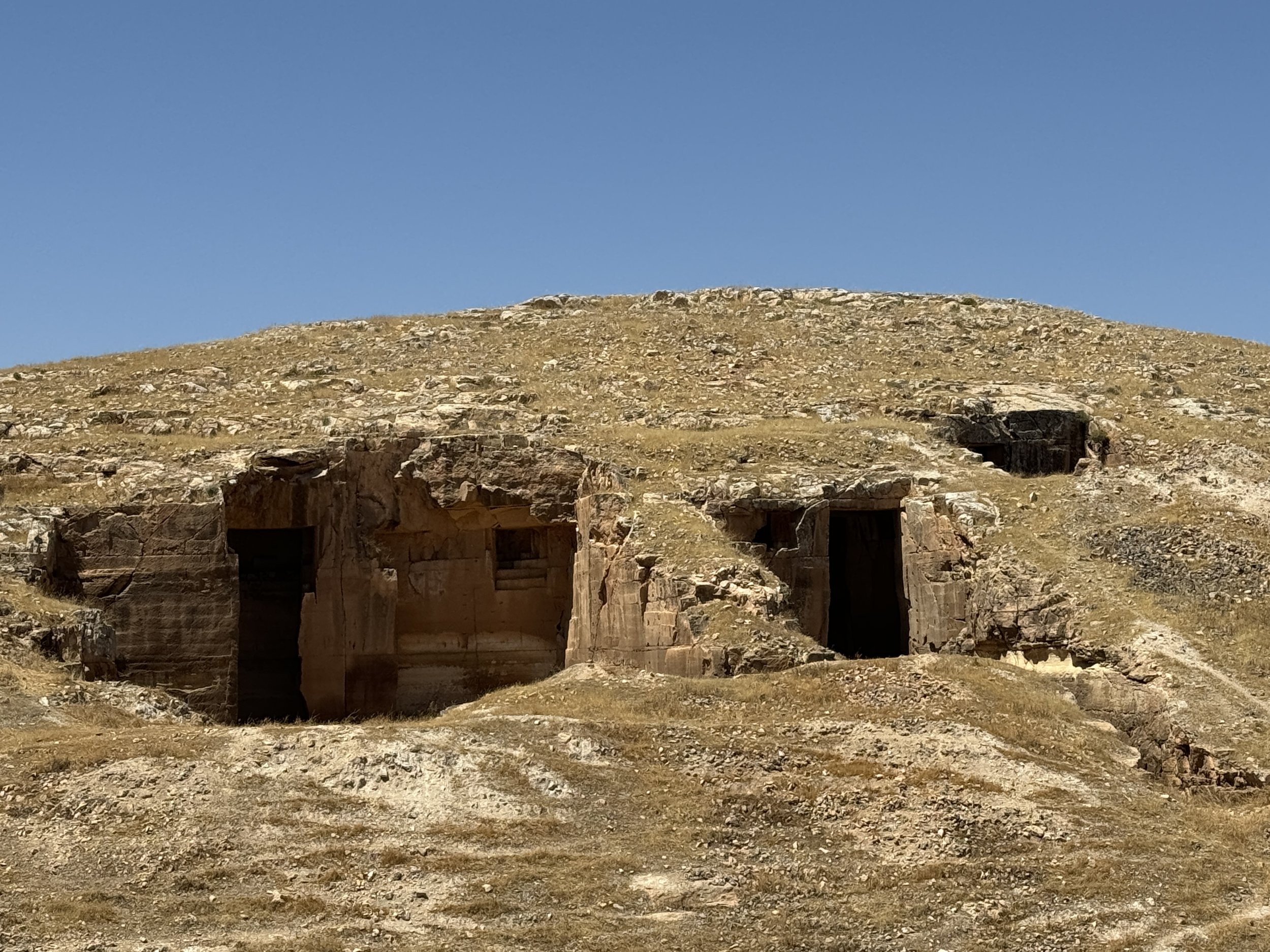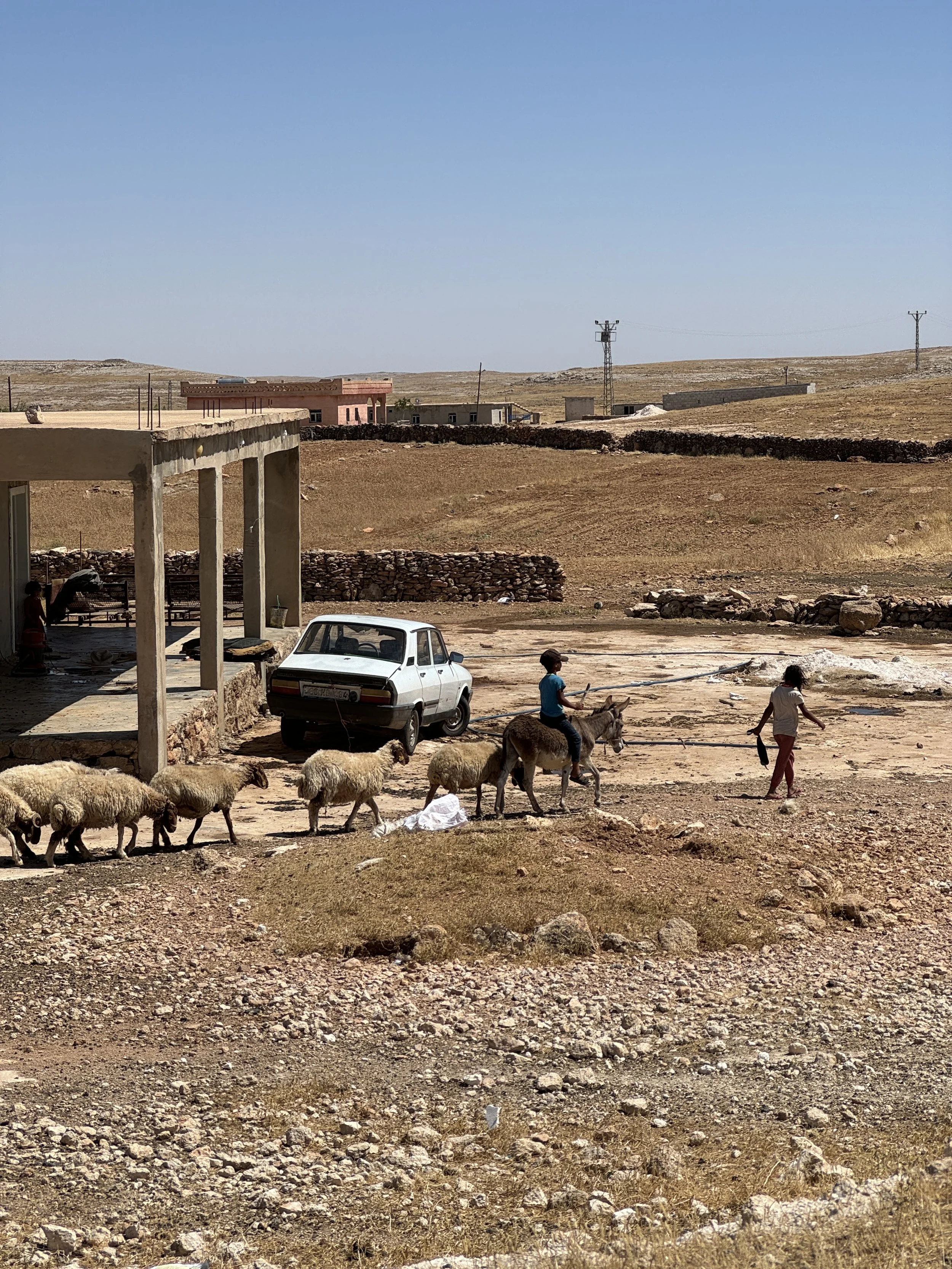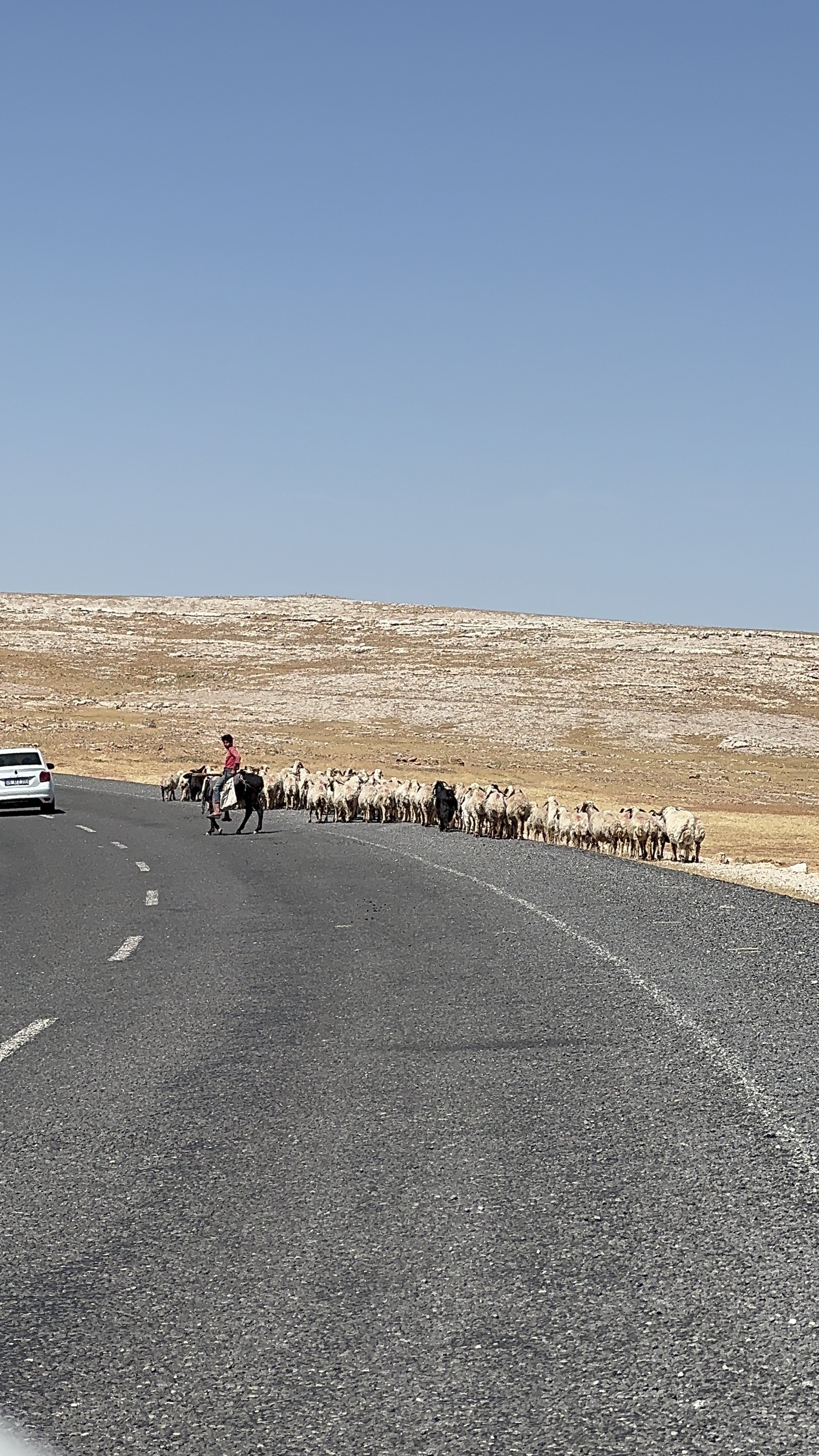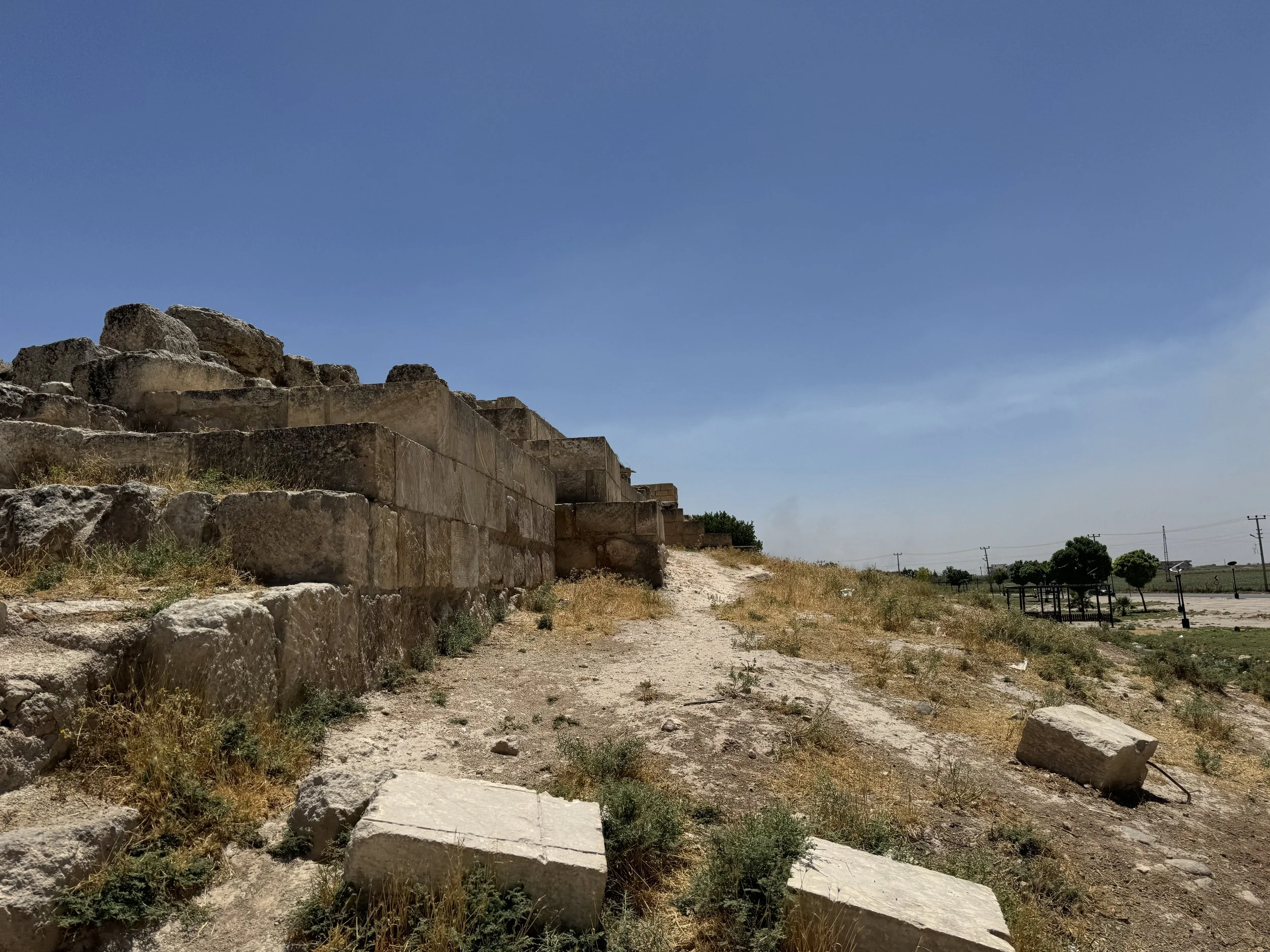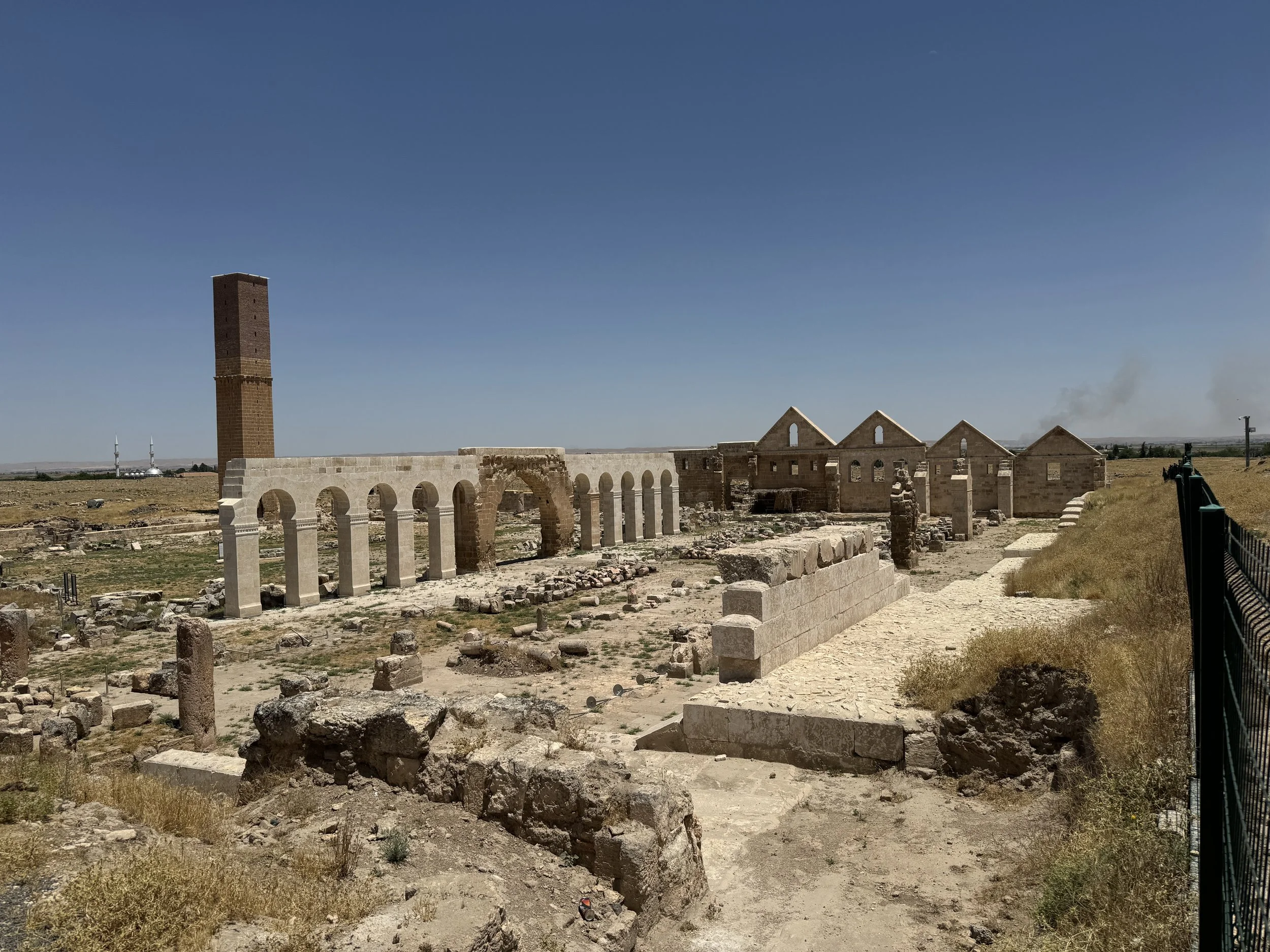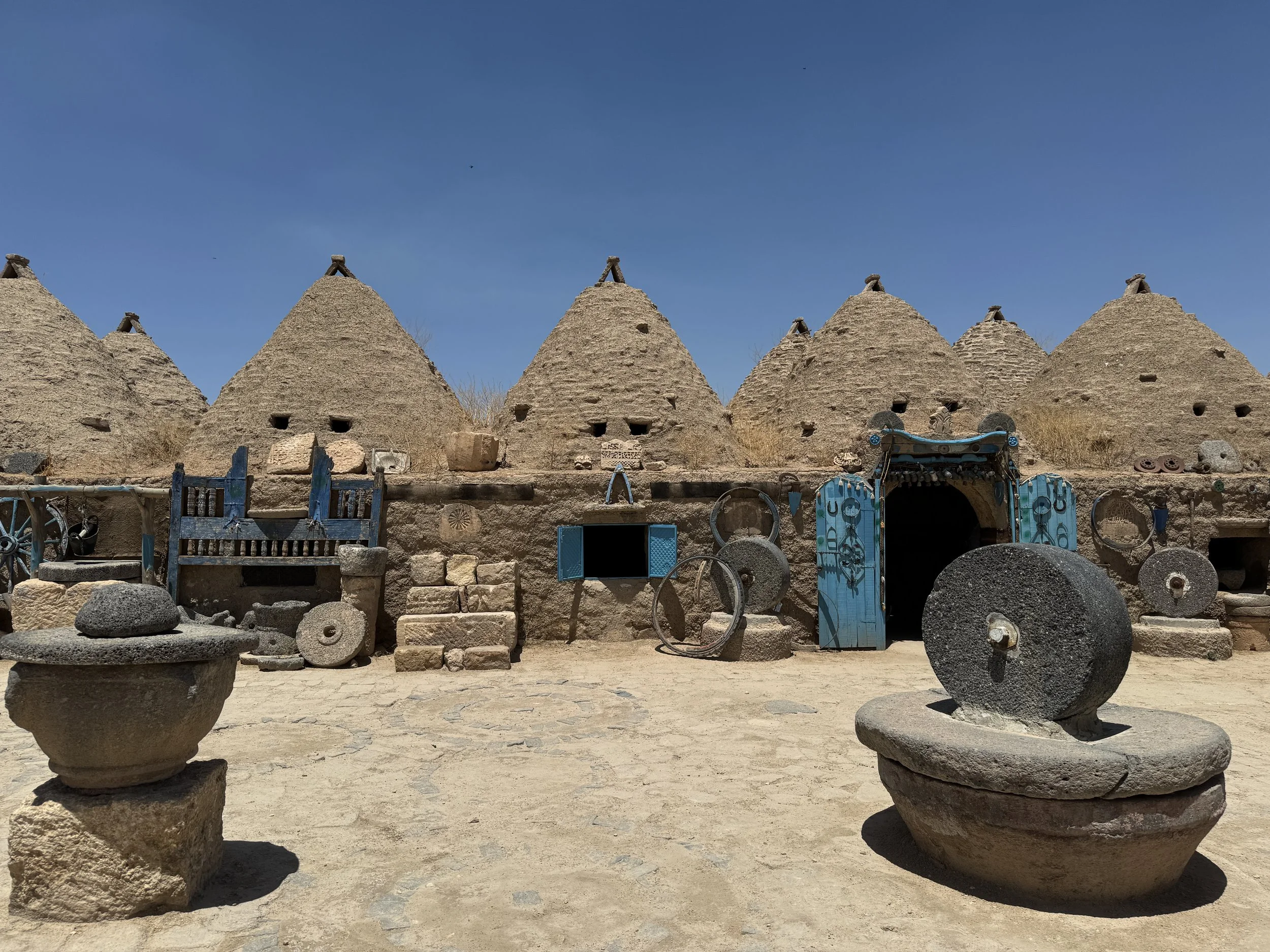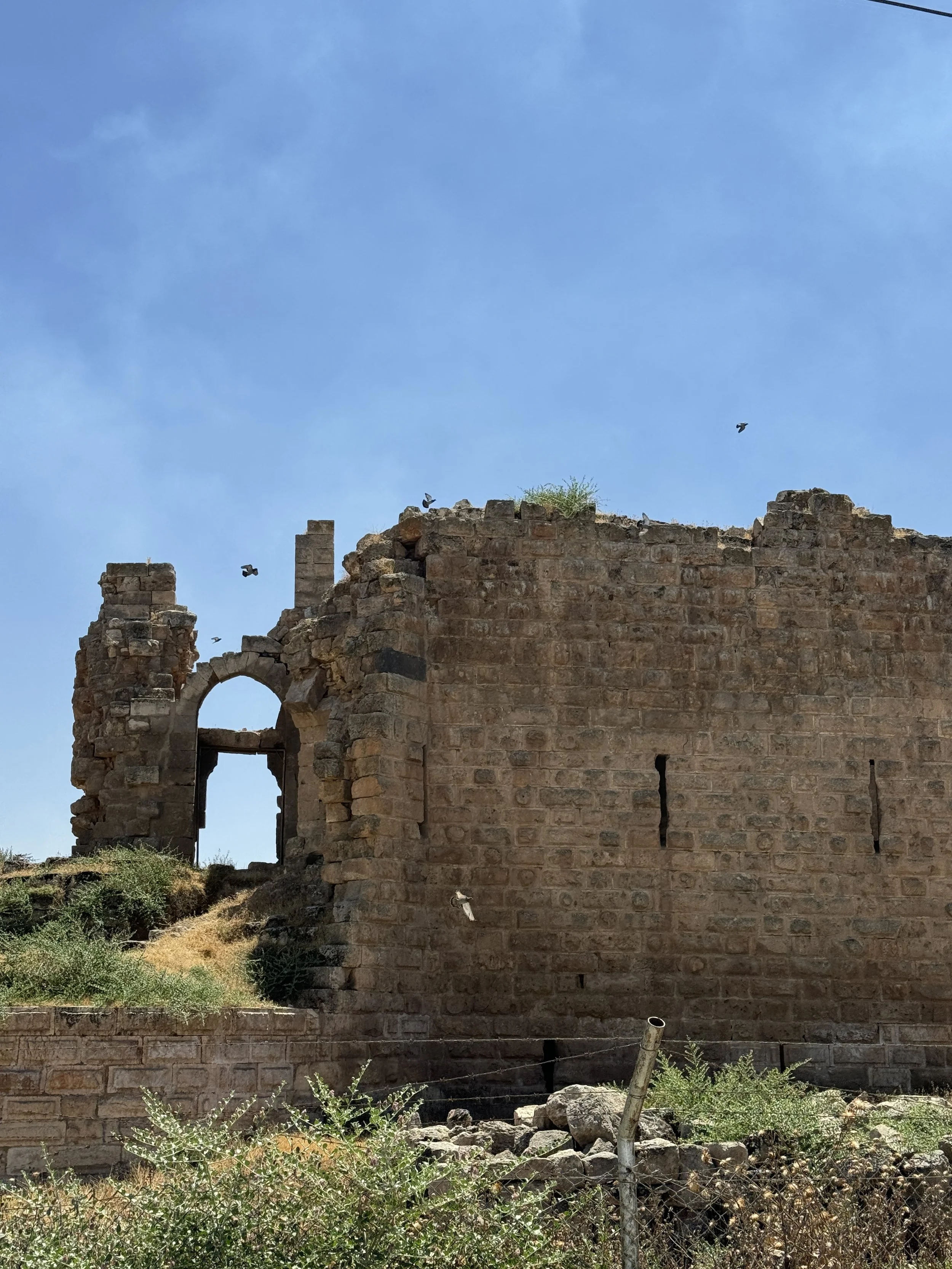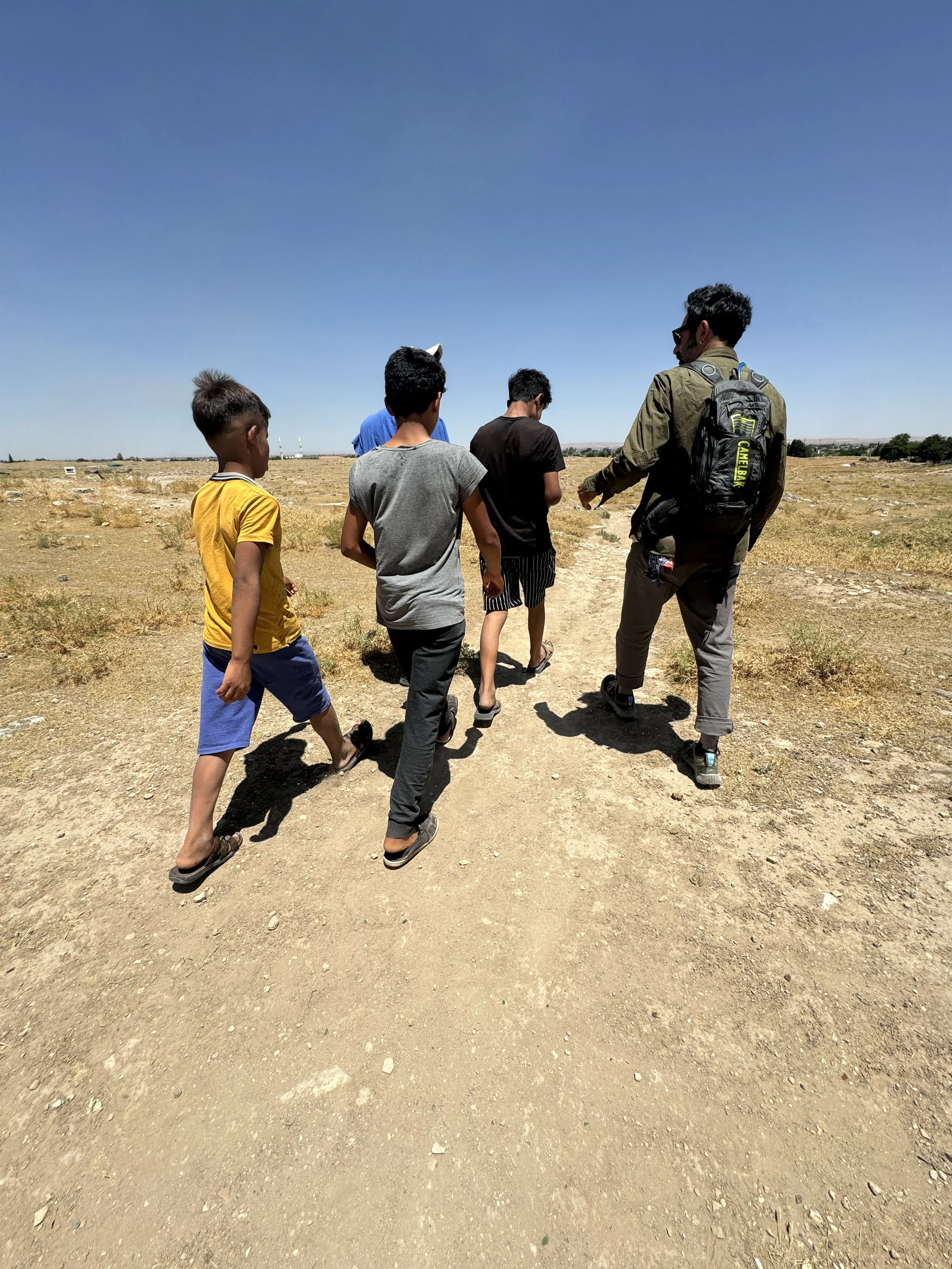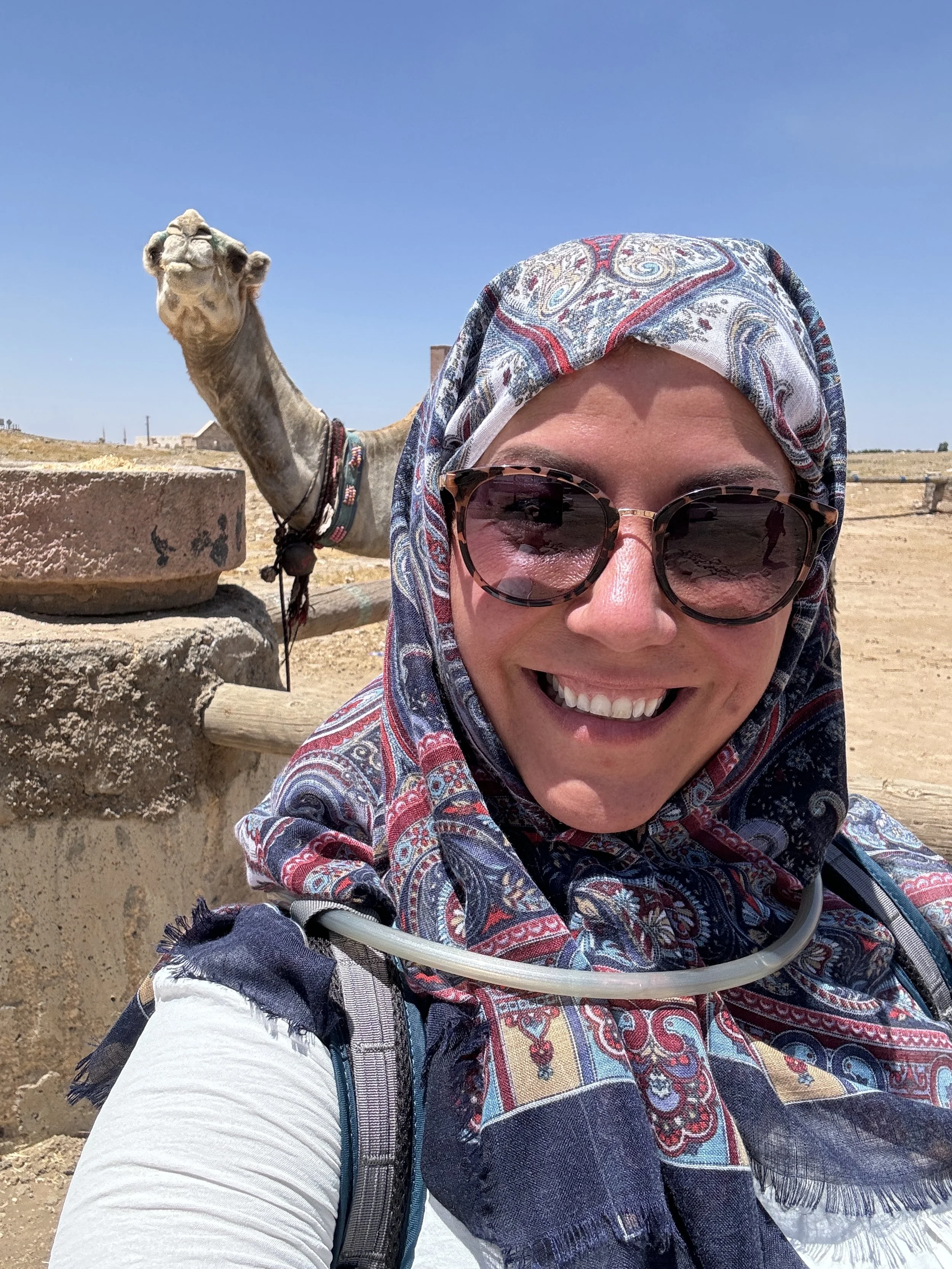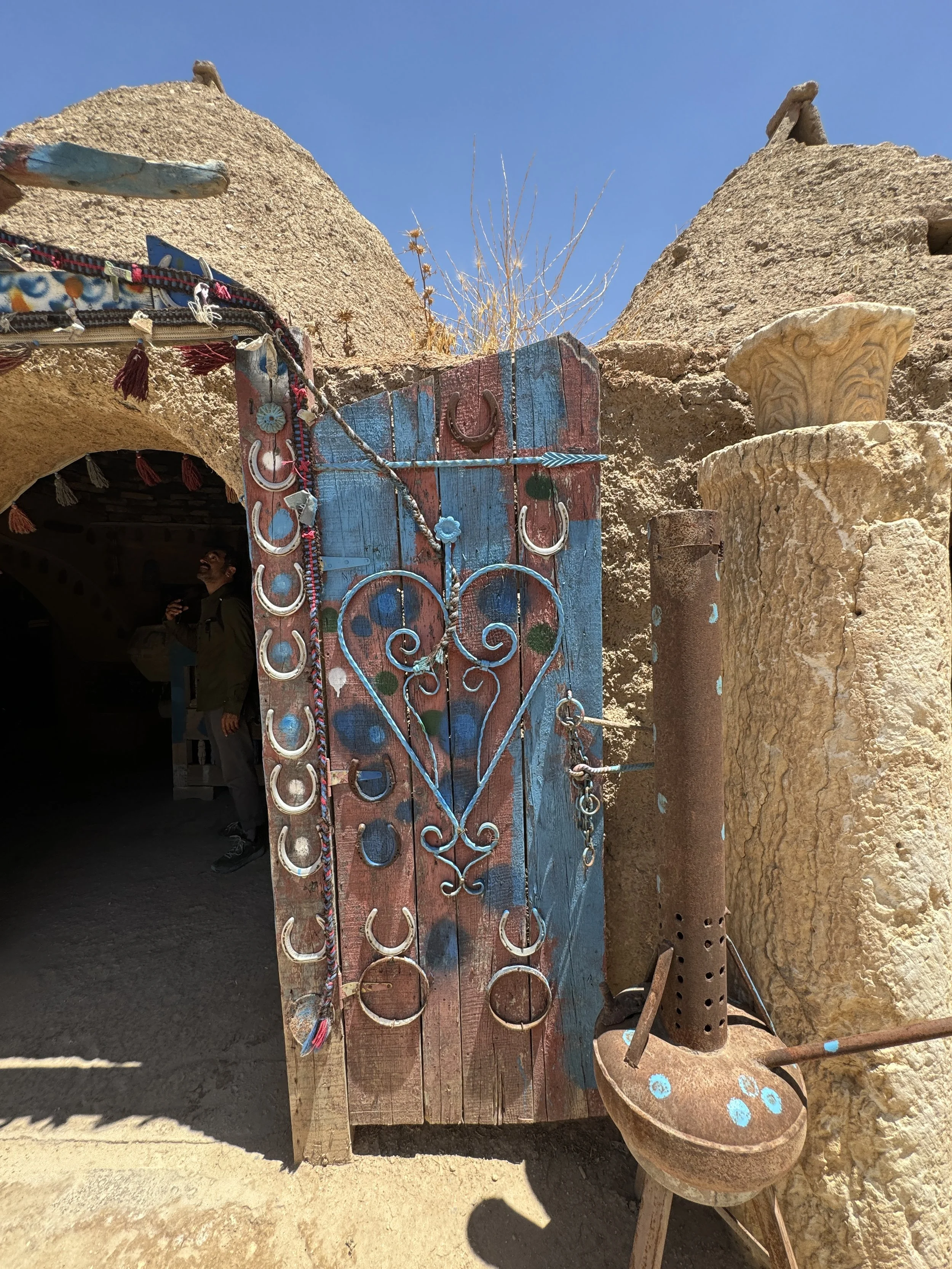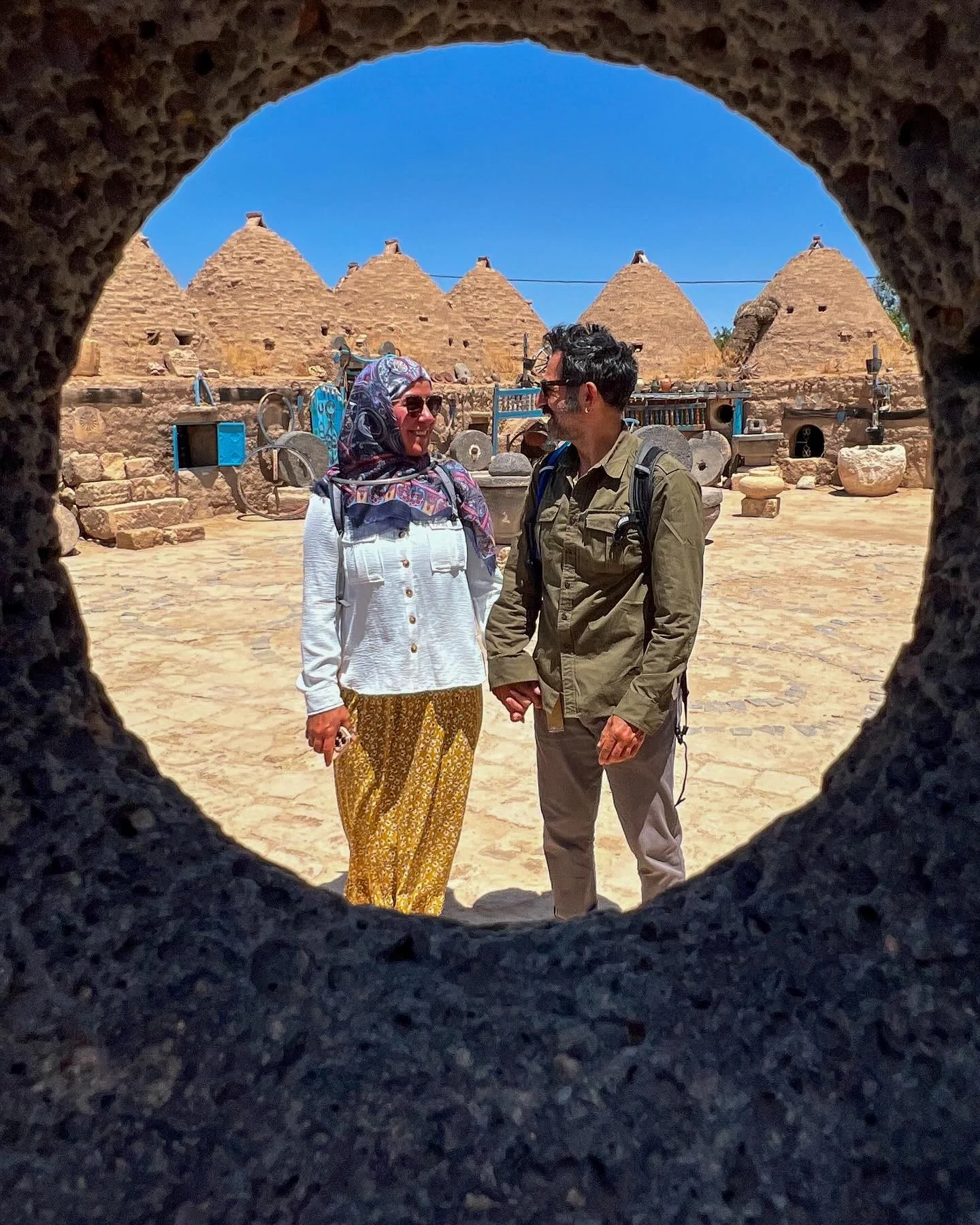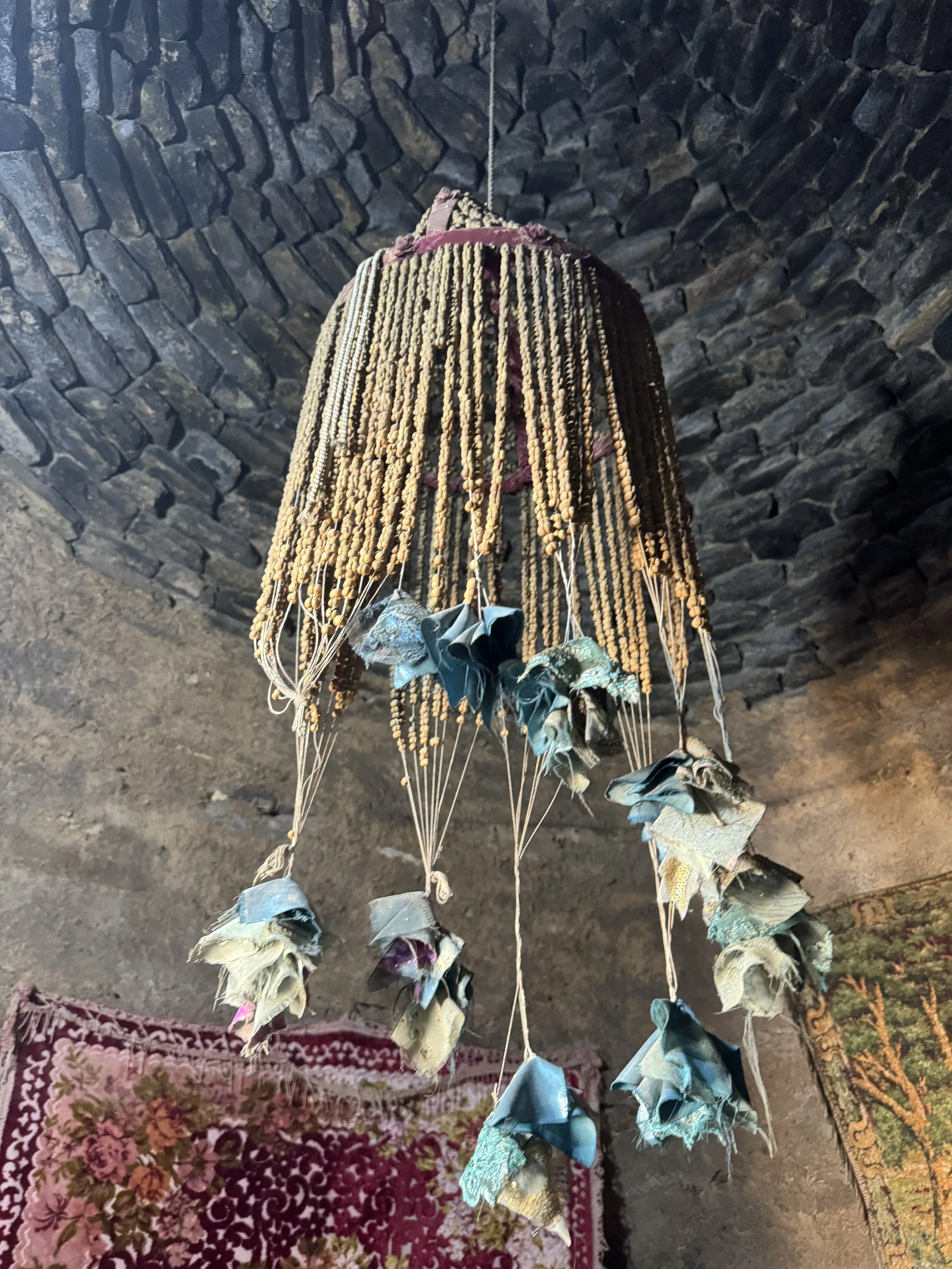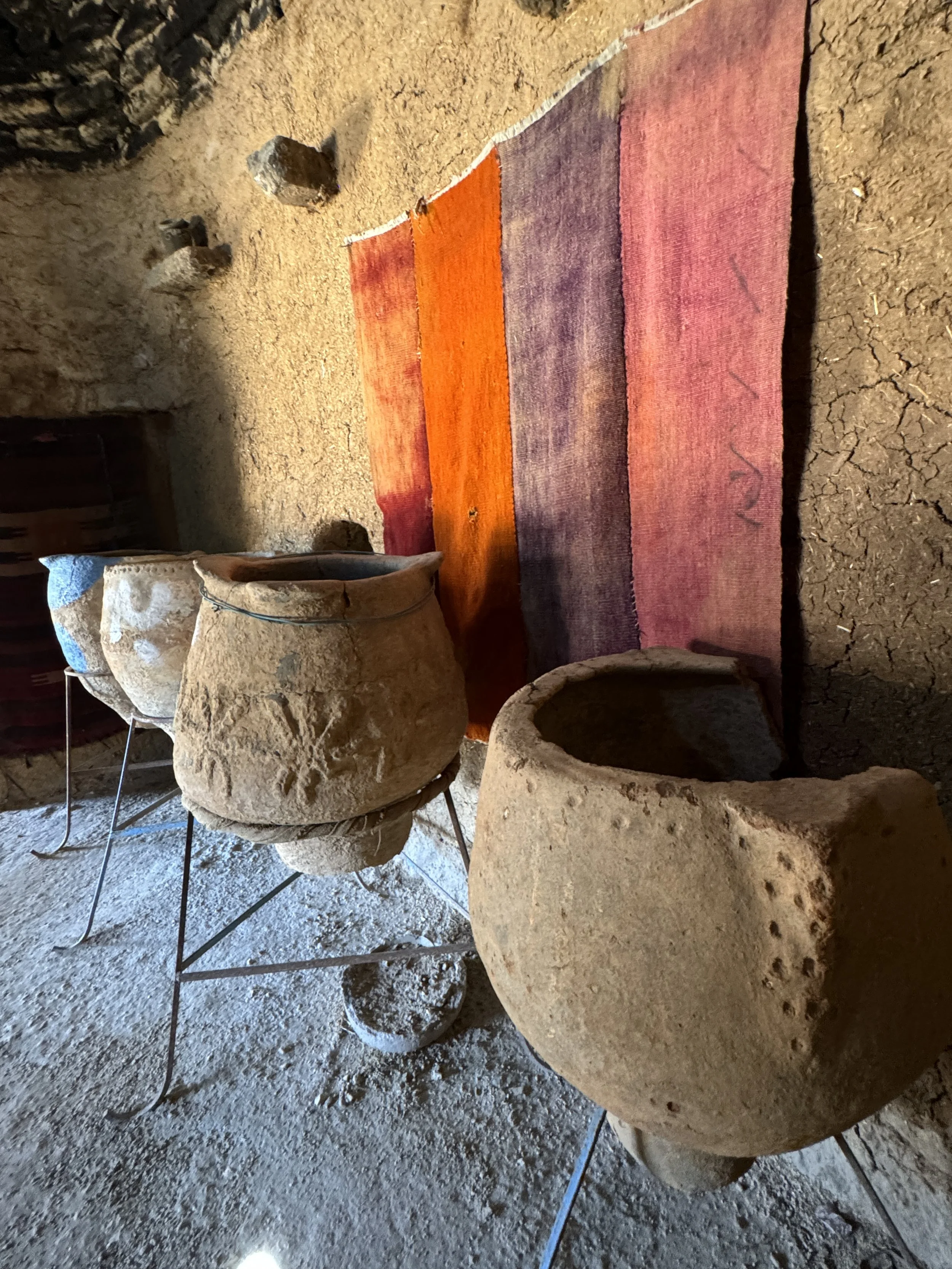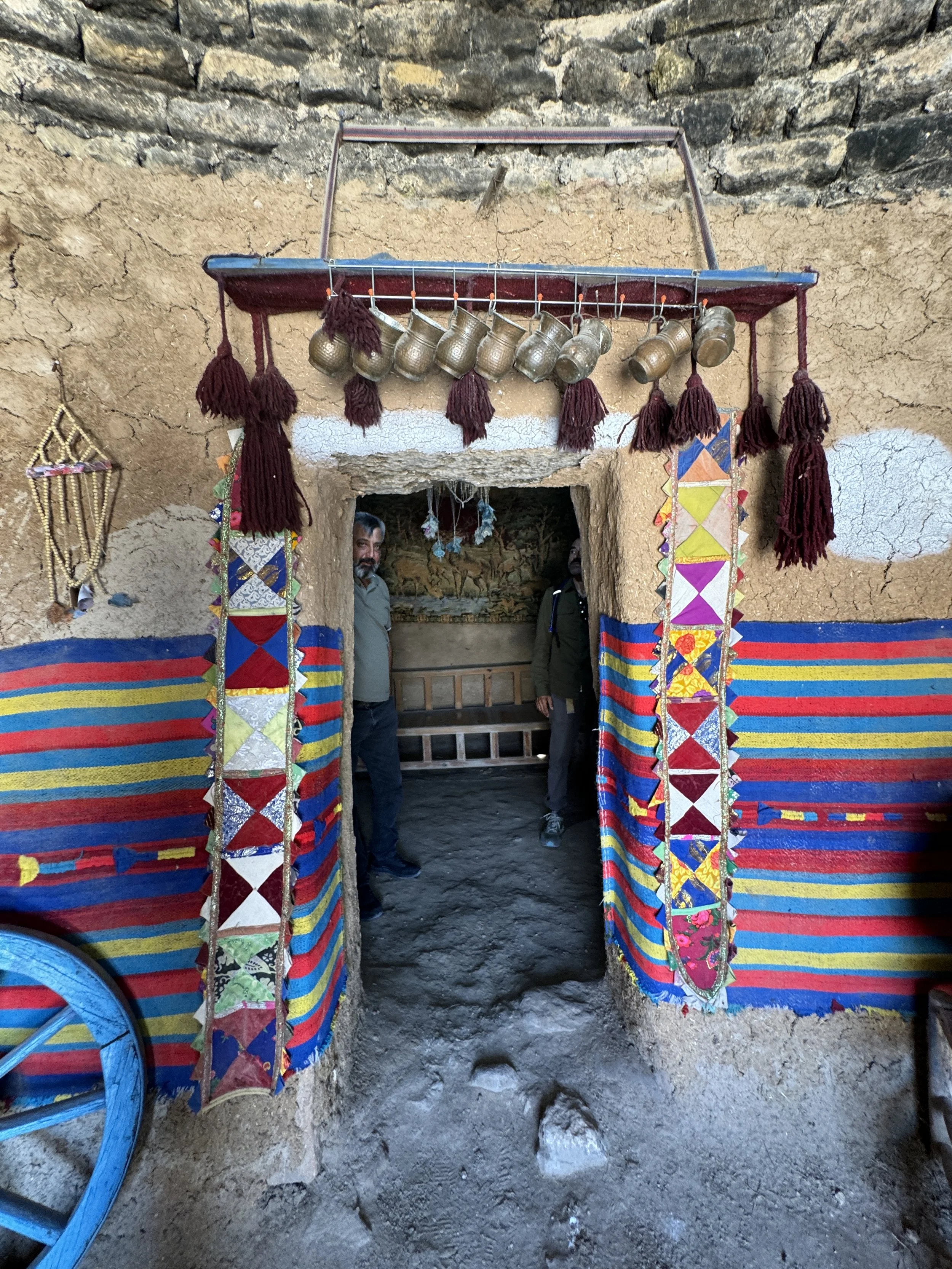Türkiye - Day 7: Journey to Harran
Timeless: Jacob’s Well, Beehive Homes & more
"A mind that is stretched by a new experience can never go back to its old dimensions." — Oliver Wendell Holmes
The Drive to Harran
We leave Şanlıurfa after a delicious breakfast at the Ala Han Boutique Hotel mid-morning. The sun isn’t at its zenith and the heat is oppressive even in the shade. We leave the main hotel area and within moments it feels like we are far from the ‘city’. We pass buildings that have seen better days and almost every woman is fully covered head-to-toe shuffling along the dry streets with children or a market basket in tow. I sit further back in the passenger seat hyper-aware of how close we are to the Syrian border and how light my hair and eyes are. We stop at a gas station and even though Z is from Türkiye, he’s getting strange looks. I pull my shawl out and cover my head, googling the best way to pin it back neatly so it looks nice. I slip my sunglasses on and feel a little more at ease. Everyone has been very polite and curious, but I don’t want to stand out nor do I want to be disrespectful. It strikes me not many white American girls pull into this gas station.
Our route from Şanlıurfa to Harran to Mardin, Türkiye. The Syrian border is the solid black line below.
The Route
Today we are heading even further south - our end goal is Mardin, but while we’re here we’re going to swing through Harran and on the way, I noticed we could see Jacob’s Well. There are other sites on the map but not much information on exactly what or where they are. Layers of history surround us here - it’s no longer like peeling a neatly layered onion - it’s more like cracking into phyllo - shattering into a thousand pieces. We are so interwoven with history and time that I am no longer centered in space. We drive out on empty highway, and we talk about how tall the thistles are. We enter the city of Harran and time slows down. While I’ve changed into a long skirt and have a button down long-sleeve shirt, I notice the women are wearing tights as well under skirts and burkas. We are far from the bustling cosmopolitan city of Istanbul and the capital of Ankara, things are different here.
Jacob’s Well
We pull our rental car up to what looks like a little park with chain link fence around it. Two old men sit on folding chairs near the gate, their fingers pass tesbih beads over gnarled knuckles. I am glad I put tights on under my skirt as it looks like they both have pants, robes, and head-coverings. We get out of the car and I feel like I stand out so completely, even covered from head to toe. Like everywhere here, we are greeted warmly, and that feeling of not belonging is instantly abated. Both men stand and we greet them in Turkish, one asks if we’d like to go inside for a small donation and we pass over Lira. He takes us in the gates and into a small serene courtyard. I can sense his devotion and excitement as we approach Jacob’s Well.
The well in Harran is traditionally believed to be the place where Jacob, the grandson of Abraham, met Rachel, who would later become his wife. According to the Book of Genesis, Jacob traveled to Harran to seek his mother’s family after leaving his home in Canaan. Upon arriving, he saw Rachel, the daughter of his uncle Laban, by the well and fell in love with her at first sight. This encounter at the well is one of the Bible’s most well-known love stories.
We are ushered over to a low stairwell down into the ground and instructed to keep our heads low. There’s a lot of Turkish and I’m not 100% sure what’s happening until I see our new friend pushing Z down towards what I’d assume is water. The stairway is short and steep and like any good American I’m wondering what is growing in this water, if it’s safe and how to not ingest any of it while simultaneously not offending our guide. Sure enough we are both doused in this holy water and encouraged to drink it out of our cupped hands. We mime drinking it as Z already is dealing with some kind of unfriendly stomach amoeba from the island.
Our guide is clearly passionate about this location and the history. He proclaims that our relationship is blessed and we are well-matched and suited. We take a photograph together and he stands proudly in between us. History again feels not that long ago here, especially after taking the major trip back in time at Göbeklitepe.
Driving Down South
As we drive from Şanlıurfa south-east to Mardin we skirt the Syrian border. The Türkiye-Syria border has been a focal point of conflict, particularly since the onset of the Syrian civil war in 2011. The border region remains volatile, with ongoing military activities and complex geopolitical dynamics involving various state and non-state actors. Short version - it’s a spicy border. Tanks, towers and chain link fences demarcate the border and there’s no question how intense this area can be. I realize again how far removed Americans are from conflict, how sheltered, how unscathed. Yet, we are so quick to pass judgements and have opinions without ever experiencing this level of policing and war. I feel small and humble. I have no idea what this life is like, why would I (or anyone else) assume to know what is best here or anywhere that is foreign?
Ancient ruins zip by carved under hilltops (see far left picture) and we don’t have the time to stop. I wonder how much of this land is unexplored and untouched - what treasures does it hold and what stories lie inside? Little kids lead herds of sheep on foot and on donkey-back. So young they are not big enough to ride horses. It’s 120ºF (49ºC) outside and they have no hats, sunglasses, or shade. They’ve got to be under 10 years old and they’re in charge of the family herd. In the second to left picture a little girl leads her brother on his donkey while the sheep follow. We’re playing some rock album mix in the car and we have the windows rolled down. She turned towards us squinting and flashed a peace sign. I wish I would’ve taken the photo - but it’s seared into me. The little boy in the second from right picture was wranging his herd from donkey-back on the highway. Cars zipped past weaving into the far lane to make room - he boldly turned his donkey and his small frame towards the traffic, placing himself in the farthest point sheltering his flock. He too looked at us - all sunbaked skin and dark eyes. Tiny hands firmly holding his reins. I know 10 year olds who can barely get themselves ready for school on time - that luxury and ease doesn’t exist out here.
Harran
Harran is a site of profound historical and cultural significance. Dating back to at least the 3rd millennium BCE, it was a pivotal center in ancient Mesopotamia, serving as a major hub for trade and religion. Notably, Harran housed the Temple of the Moon God Sin and is mentioned in biblical narratives as the place where Abraham and his family settled during their journey from Ur to Canaan. In the 8th century, Harran became an important center of learning during the Islamic Golden Age. It was home to one of the era’s most renowned universities, which served as a hub for scholars and scientists studying mathematics, astronomy, medicine, and philosophy.
Today, Harran is renowned for its beehive-shaped houses, constructed from mud bricks and designed to provide natural insulation against the region's extreme temperatures. This architectural style, dating back over 3,000 years, reflects the ingenuity of its inhabitants in adapting to their environment.
We park the car after driving around in lazy circles - it seems that ruins are jumbled up against modern day shops and farm carts are pushed past old relics. Beehive homes are tucked in backyards and we layer for the heat and I grab my backpack with my camelback (very fashionable, I know, but it’s over 115º out here and I need all the help I can get)! It seems the farther we go south and east, the less separation there is between archaeological sites and in-use areas and the less separation between then and now.
We walk on an old dirt path that winds its way through thistles and piles of rocks. Upon closer inspection these ‘rocks’ have carvings and markings. They’ve simply been left where they fell over time - history is both revered and casual here. We see a giant structure in the distance and we realize we’re on the backside of the ancient university. When I see the kids herding sheep on their donkeys it’s easy to forget that this area of the world is the birthplace of math, science, astronomy and medicine. Education in Europe at the time was primarily religious-based and localized, Harran and other Islamic centers thrived as hubs of scientific and philosophical inquiry. Islamic scholars preserved and expanded upon Greek, Roman, Indian, and Persian knowledge, creating a robust intellectual tradition. By contrast, Europe's focus was on preserving existing Christian knowledge and rebuilding basic literacy after the disruptions caused by the fall of the Western Roman Empire.
Beehive Homes
A pack of young boys stand off in the distance gauging us as we walk along the side of the university and approach the main touring area of the Beehive homes. Z calls out to them in Turkish and then in Arabic. They answer and rush over, they look the way puppies do - oversized feet and gangly limbs. They want to know if we want a tour - for a small price they can tell us what they know. It’s a really hot day and the adults are getting ready for the coming Bayram celebrations and they want to go to the pool, but it costs something like $0.25 to get in and that’s expensive. Z fishes money out of his pocket and gives it to the boys. They walk with us talking about futbol and life and they think it’s pretty cool that he’s from Türkiye but lives in America.
The camel towers above it’s gate, one big eye lazily watching us as he eats. His jaw seems capable of only moving in circles and half the grass falls on the dirt beneath him. I don’t know if I’ve ever seen a camel this close, and I think it’s hilarious and also kind of scary. He doesn’t seem like he’s as excited about a white girl from America as I am about a Camel from Harran. A friendly man comes out and waves us over to the entrance and proceeds to begin our tour of the homes.
We walk through the gate and are greeted with a beautiful courtyard. The homes are made of mud bricks with a clay coating in a conical shape and they’re built to shelter the inhabitants from the extreme heat of the desert. It is remarkably cooler inside and the farther towards the center of the homes you go, the more pleasant it becomes. The decorations are cheerful and colorful, rugs and pillows are spread beside large vases and mirrors reflect light from small windows and doors. Our guide mentions that he grew up in a beehive home - reminding us that these are not structures solely from the past. He says he misses it now more often than not - it was a simpler time. He snaps a few funny photos of us living our best ‘Harran life’ and we buy a few items at the local shop.
As always, we try to buy gifts and little things to help the families out who maintain and operate these wonderful sites - I recommend you do as well. We found the folks here to be extremely friendly, curious, well-spoken and even here, in the far corners of Türkiye, many are bilingual (at least) - which is far more than you can say for many Americans. I also found the people to have a pretty broad understanding of history compared to Americans - although I’d imagine living in the cradle of so much history, it becomes a part of your history. Everyone so far on this trip has been so kind, welcoming, curious and caring - it seems that every day I am reminded that humans are not that bad after all. The world seems infinitely vast and at the same time, there is something to be shared in all of us. These days and weeks and moments are changing me in ways I cannot forsee.
Up Next…
Stay tuned for one of my FAVORITE cities on this trip (and definitely top 5 this year)! We head from here to the magical old city of Mardin, overlooking the land they still refer to as Mesopotamia. I was gleefully hustled into riding a fancy horse by boys who’d taken an iPhone photography class, sweet-talked by an alleged descendent of the former Sultan, charmed by the shops and wineries and delighted by sweeping views of ancient lands!


